The Asian art collection in the Sydney University Museums collection provides a physical connection to the diverse pasts and cultures of Australia’s neighbours. A display of Chinese artefacts from the University’s art collection currently on Level 1 of Fisher Library is a small step in communicating to visiting schools the exciting and emerging research into the Asian region undertaken by researchers at the University of Sydney. The small display of artefacts is divided into three key themes: People and Society, Food and China’s Interactions with the World.
The display is designed to emphasis to students that China throughout its diverse history and communities, has been deeply connected to its neighbours through trade, warfare and diplomacy. The written histories of China, especially of the Ming Dynasty, often paint a picture of an idealised, unchanging and isolated civilisation cut off from the outside world. The archaeological record however demonstrates a China that has a long and complex history of interactions with its neighbours, especially to the north in Mongolia, and Southeast Asia.
The artefacts displayed provide some evidence for this new way of understanding China’s relationship with the rest of Asia. They include Taoist religious statues, beautiful blue-white ceramics manufactured for trade with Southeast Asia and pottery depictions of the camels that crossed the deserts of the Silk Road.
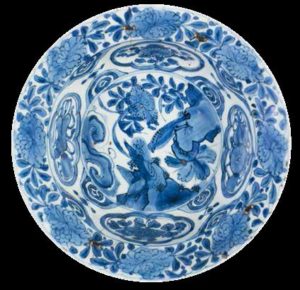
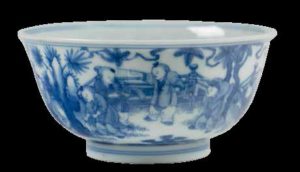
A painted terracotta of a Bactrian camel and rider in the collection is from the Tang dynasty (618-907 AD), while another painted terracotta camel is of a date still unknown. Together they evocatively demonstrate the role of the silk route in linking China with the west. Likewise the Tang or Ming dynasty figurine of a musician is dressed in a western Chinese style and displays the scope of Central Asian clothing influences. 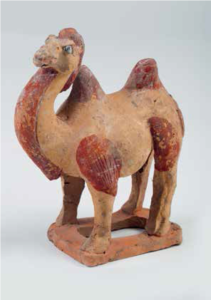
A Neolithic period burnished tripod pot is a prehistoric rice cooker. As the mainstay of diet, rice underlies millennia of food technology not only for China but the whole region. Platters become popular in China after the 13th century Mongolian invasion, and sharing food from a large platter such as this Late Ming dynasty (16th-17th centuries) ceramic blue and white while smaller individual porcelain bowls were filled with food served from the platters, such as this bowl. These porcelain bowls eventually become fashionable in Europe and were common in colonial period Sydney.
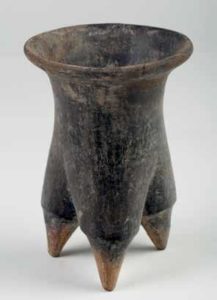
Students are able to access these objects and critically assess their role in developing an archaeological narrative of China, as they currently do with Egyptian and Classical antiquities in the Nicholson Museum. This interaction can only develop in the future with the rise of public interest and popularity in Asian history as Australia moves into the ‘Asian Century’.
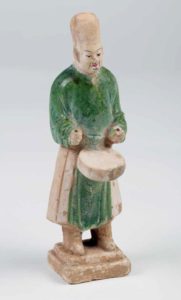
(Images and content from original article in Leadbetter, June 2016 MUSE http://sydney.edu.au/museums/publications/muse/muse-jun2016.pdf )
For more on Michael’s work and research you can follow him on twitter or read more of his work on https://sydney.academia.edu/MichaelPaulLeadbetter
 Facebook
Facebook  Twitter
Twitter  Soundcloud
Soundcloud  Youtube
Youtube  Rss
Rss 

